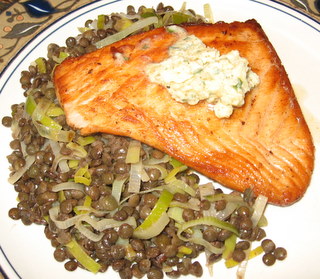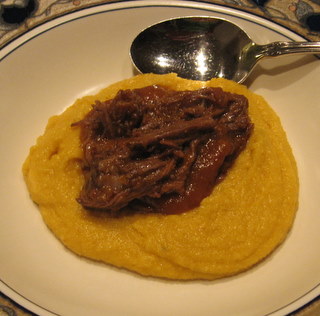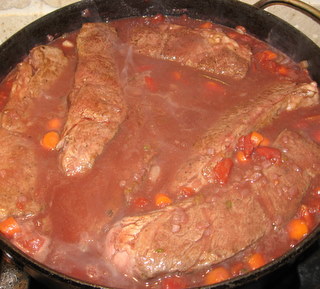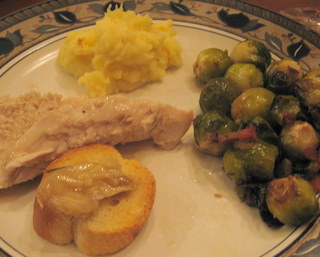Not actually a surprise to those of us who have been supporting the organic movement (which is admittedly pretty mainstream, at this point) for years, but an interesting article, nonetheless. Article about organic produce from Cooking Light magazine. The article didn’t mention this, but I have an additional theory (not based on anything other than … Continue reading “Organic produce is more nutritious!”
Not actually a surprise to those of us who have been supporting the organic movement (which is admittedly pretty mainstream, at this point) for years, but an interesting article, nonetheless.
Article about organic produce from Cooking Light magazine.
The article didn’t mention this, but I have an additional theory (not based on anything other than a hunch and a little common sense):
“Conventional” produce is sprayed with fungicides after harvesting, to keep it from rotting in the truck on its way to your supermarket. These chemicals keep it from displaying outward signs of spoilage for a longer period of time. Have you ever picked organic strawberries from a farm or farmers’ market? Ya gotta eat those the same day you buy ’em, baby. They go bad FAST. But strawberries from a supermarket? They’re sprayed with all sorts of chemicals to keep them from rotting. They can survive two or three days on the truck from Watsonville to you and then another two or three days in your fridge. They may LOOK okay on the outside, but it’s only common sense to understand that they will have lost some of their nutrient value from oxidation (not to mention the problem of the added chemicals) after being away from the plant (and water and nutrients) for that long.
Another thing is that “conventional” produce is frequently picked when it is not yet ripe (with the idea being that it will finishing ripening during shipping). Of course, produce that is not allowed to finish ripening on the vine (or on the tree, or in the ground, or whatever) will not have the opportunity to develop the same levels of vitamins as organically grown produce, which is more frequently picked when it is completely ripe.
The downside, of course, is that organic produce DOES spoil more quickly. And it does cost more. It must be shipped immediately to the store and must be bought and consumed more quickly. This is why one frequent excuse for not buying organic is that “it doesn’t look as good” as the conventional stuff. I agree, at least sometimes. One of my pet peeves is seeing all of the nasty, slimy looking organic produce at the store, when all of the conventional stuff is picture perfect. (There are going to be some signs of little “bug bites” occasionally on organic produce. I take this as a good sign. I don’t want to eat something that would kill a bug, thank you.) Obviously, you should use your best judgment. No one is encouraging you to buy slimy lettuce or soggy apples, but, when you have the choice and the opportunity, I believe that it’s best to try to buy organic. Of course, the more of us that buy the organic stuff, the faster it will turn over at the store and the fresher it will be…
NOTE: If you go to an organic farmstand or farmers’ market, you’ll have the best of ALL worlds:
The produce will be fresh, out of the ground; it is usually cheaper than organic produce at a supermarket and you usually get to talk to the growers. You can ask questions about how to prepare an unusual vegetable that you might not have ever never seen before, etc. You’ll also get things that are local and in season, but that’s a whole separate lecture.
(In the interest of full disclosure, I must admit that I have close family connections with a local organic farm. I also will admit that I am far from perfect. I do succumb occasionally to the beautiful produce at Costco, but I do buy organically, locally and in season, as much as I conveniently can.)
Right about now, you’re probably thinking “Can’t I just wash the pesticides off after I buy the produce?!?”…”
No, you really can’t, at least not usually. Pesticides are sprayed onto the whole plant (where they are absorbed into the plant and distributed throughout), but a lot of it also falls onto the soil. When it rains or the plants are irrigated, the pesticides are washed into the soil, where they can be absorbed into the plants’ vascular system via the roots. Remember, in kindergarten, where you put a carnation flower or a stalk of celery into a glass of water with some food coloring in it? Remember how the dye distributed throughout the whole plant/flower so that the white carnation you started out with became a startling, but beautiful, blue? That is exactly what the pesticides do. They don’t simply “wash off” when you rinse your produce, because they’re not just on the outside of the food, but are imbedded inside.
There are some fruits and vegetables, however, that are more vulnerable or appealing to insects, so they are routinely sprayed with higher levels of pesticides to scare away the bugs, or there are some other plants that are naturally more bug-resistant, so they routinely don’t need as much pesticide to prevent bug damage. Some plants, due to a higher water content, absorb more pesticides naturally. So, if all else fails and you just aren’t sold on the idea of organic produce, or only want to spend the money on it at times when it REALLY counts, you should know which fruits and vegetables have the highest concentrations of pesticides and which have the lowest.
Here ya go:
Produce with the HIGHEST pesticide levels
(strongly recommended that you only buy these foods when organic choices are available):
Peaches
Apples
Sweet Bell Peppers
Celery
Nectarines
Strawberries
Cherries
Lettuce
Imported Grapes
Pears
Produce with the LOWEST pesticide levels, even when NOT organically grown:
Onions
Avocado
Frozen Sweet Corn
Pineapples
Mango
Frozen Sweet Peas
Asparagus
Kiwi
Bananas
Cabbage
This data comes from the Environmental Working Group and the whole list (wondering where tomatoes fall? mushrooms? potatoes?) can be viewed here (scroll down a bit).
Thanks for listening (is anyone still reading?). I’m stepping down from the soapbox now.




















